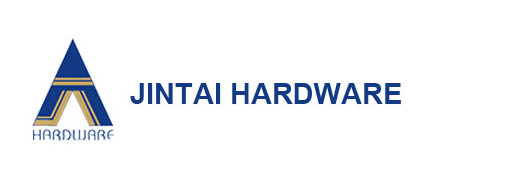The disassembly of rolling bearings is one of the important disassembly contents in the maintenance of mechanical vehicles. The removal of sliding oil-free bearings must follow the basic rules for bearing assembly and disassembly, and different removal tools and methods must be used for different bearings. So how should the rolling bearing be disassembled? Let's take a look together.
When the bearing is tightly fitted with the shaft, and the bearing slides into a loosely lubricated bearing hole, the bearing and the shaft can be removed from the housing together, and then the bearing can be removed from the shaft with a press or other removal tools.
1) Disassembly of the outer ring. To remove the interference-fitting outer ring, set several oil-free bearing bushings on the circumference of the casing to squeeze the screw for the outer ring beforehand. Tighten the screw evenly while disassembling it. These screw holes are usually covered with separate bearings such as blind plugs, tapered roller bearings, etc. Several cutouts are set on the shoulder of the housing, and they are disassembled with a press using a pad or lightly tapped.
2) Disassembly of cylindrical bore bearings. It is easiest to pull out with a press. At this time, pay attention to the inner ring to withstand its pulling force. The inner ring of large bearings is disassembled by hydraulic method. Oil pressure is provided through an oil hole provided on the shaft to make it easy to pull. Bearings with large widths can be disassembled by using the hydraulic method and drawing fixtures together. The inner ring of NU and NJ cylindrical roller bearings can be disassembled by induction heating. A method of heating the local part in a short time to expand the inner ring and then pulling.
3) Disassembly of tapered bore bearings. Remove the relatively small bearing with adapter sleeve, support the inner ring with a stopper fastened to the shaft, turn the nut back several times, and use a pad to knock it with a hammer. For large bearings, it is easier to disassemble by hydraulic pressure. The method of pressure-feeding oil in the oil hole on the tapered shaft and expanding the inner ring to disassemble the bearing. During operation, there is a risk of the bearing suddenly falling out. It is better to use the nut as a stopper.
4) Breakdown method. Breakdown is one of the simplest and most common methods of disassembly. It is a disassembly method to achieve the disassembly purpose by displacing mutually cooperating parts by the force of hammering. The structure of the parts is relatively simple, and the parts are solid or some unimportant parts. Most of them are disassembled by this method. Before disassembly, in order to reduce friction, the joints are often wetted with lubricant. Breakdown is a simple and easy way to remove. The tools commonly used for dismantling are hand hammers, that is, ordinary fitter hand hammers, punches and pads. The punch is made of steel. The top of the hammer is machined into a spherical shape. The end that is in contact with the workpiece is usually inlaid with soft metal such as copper and aluminum and made flat or suitable for the workpiece to protect the surface of the workpiece. No damage. When disassembling, different methods and steps should be adopted according to different mechanical structures. Sliding bearing bushings and rolling bearing jackets are interference fits in the holes. Taking them out of the holes is also a common method of removal. When removing, the end face of the bushing that has been hammered should be cushioned. When removing a small-diameter bushing, it is best to use a stepped punch. The small diameter of the punch matches the inner hole of the bush. The large diameter of the punch is about 0.5mm smaller than the outer diameter of the bush. For the removal of large diameter bushings and rolling bearings, sleeves are often used. For the removal of ordinary small bearing caps, symmetrically driving the inclined pads is often used to open the bearing caps.
5) Press and pull. Pressure unloading and pulling unloading have many advantages over hitting unloading. It applies force uniformly, the magnitude and direction of the force are easy to control, and it can dismantle large parts and components with large interference, and this disassembly method damages the parts. Less chance. However, pressure unloading and pull unloading require corresponding machinery and tools. Pressure unloading requires the use of a press machine. Commonly used press machines include mechanical presses, friction presses, and hydraulic presses.
Pull die is often used for pulling and unloading. There are two types of fixed and movable arms, and two and three claws. The pulling force applied by the die claws should be added to the bearing inner ring. The structure is special and cannot be pulled. For the inner ring, you can pull the outer ring.
CATEGORIES
Latest news
- FB090/FB092 Wrapped Bronze Bearings
- Shock Absorber Upper & Lower Bush
- Hollow Shaft Magnetic Ferrofluid Vacuu
- Bronze Sliding Du Bush Bearing, Bronze
- Magnetic Ferrofluid Vacuum Sealing Fee
- Metal-polymer,Low Friction,Plain Beari
Contact us
- ADD: No.503,Hunan International Commerce Center, Jintai Square,Changsha 410001,Hunan
- TEL: 86-731-84770165
- FAX: 86-731-84770163
- E-mail: sales4@@slide-bearing.com

